Anfernee Simons Bucks One-and-Done, Heads for NBA
A top basketball prospect is skipping the farcical year in college before turning pro.
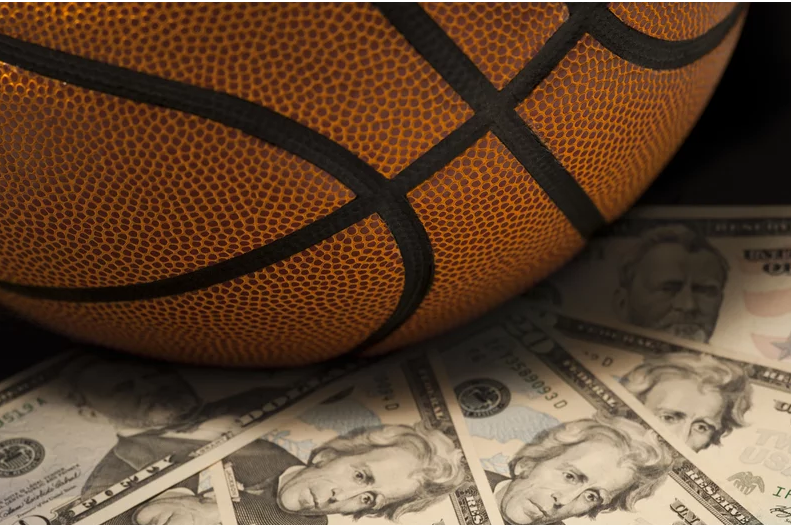
ESPN (“Anfernee Simons declares for NBA draft, forgoing collegiate eligibility“):
Anfernee Simons will forgo his collegiate eligibility and declare for the 2018 NBA draft, he informed ESPN.
“After discussing the matter with my parents, I have decided to forgo the opportunity to play in the NCAA and to instead enter the NBA draft,” Simons said. “I am very thankful for the support I received at IMG Academy and from the NCAA coaches who recruited me. I am ready and excited to pursue my dream of playing in the NBA.”
Simons, a top-10 high school recruit according to the ESPN 100, is eligible for the 2018 draft as a postgraduate, being one year removed from his high school graduation, and turning 19 in June, thus satisfying NBA requirements. He spent his fifth year of high school at IMG Academy in Bradenton, Florida, and was recently named to the prestigious Nike Hoop Summit and Jordan Brand Classic events.
Traditionally, of course, players spent three or four years in the college game developing. The NCAA was for all practical purposes a minor or developmental league for the NBA. With rare exceptions like Moses Malone, everyone went to college and only those who could get a “hardship” waiver—demonstration that their family economic situation was especially desperate—were allowed to leave early. By the mid-1990s, though, that process became a sham and more and more top players—most notably Kevin Garnett and Kobe Bryant—declared for the draft right out of high school and became superstars.
The overwhelming number of them, however, were busts. This upended the whole point of the lottery system, which was to give the worst team a shot at the best players. Even though the 18-year-olds almost inevitably failed to make the transition to the professional game, general managers afraid of missing out on the next Garnett, Bryant or Lebron James nonetheless continued to gamble on prospects based on projections.
Back in 2005, the NBA’s new collective bargaining agreement required that players be at least 19 years old and one year removed from their high school class’ graduation date to be eligible for the draft. This was good for the players and the league but awful for the college game.
Because that same CBA also included a rookie cap, there was a strong urgency to get into the league as soon as possible. While some went off to Europe or Asia to play semi-pro ball, most top prospects went to college. But, because it was truly a matter of simply waiting until NBA draft eligibility, even the illusion of being a student-athlete was eschewed. Players did the bare minimum to ensure collegiate eligibility but that doing that for a single basketball season isn’t that tough—one can even get put on academic probation after the first semester since there’s no intention of finishing the second semester.
This created some perverse incentives, indeed, including the pay-for-play scandals that the FBI has been investigating for the last couple of years.
I would be shocked if more players didn’t follow Simons’ model or that of the younger Ball brothers. It makes far more sense for can’t-miss NBA prospects to go to an IMG academy or a professional league elsewhere to focus their energies 100 percent on basketball without the hypocrisy of pretending to be a college student.


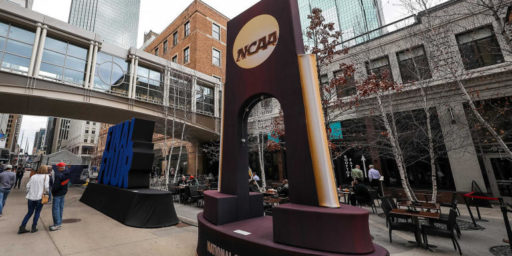
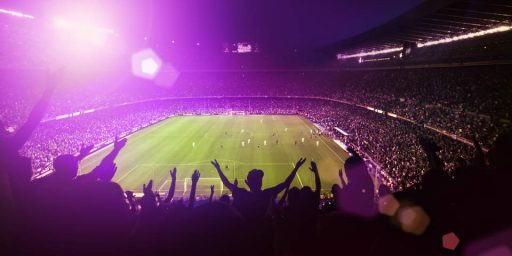
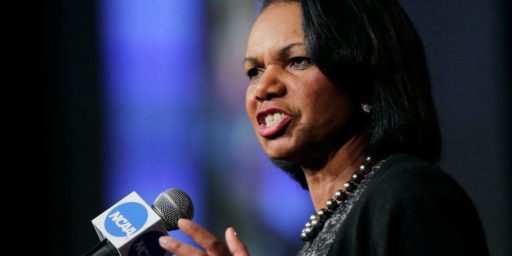
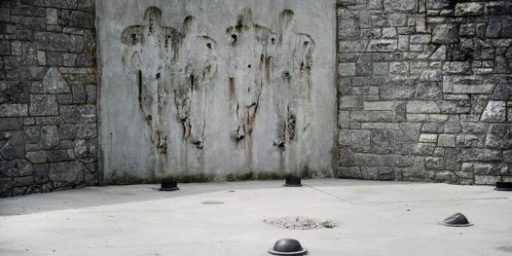
I wish we would give up this farcical “college athletics” BS and just institute minor league teams for football, basketball, etc. It works great in baseball and hockey, being good for the sport, the teams, and the towns they play in. The rest of college athletics could become like college baseball and hockey, i.e. sports that college students play as something secondary to their degree. Which would also serve to give college Division 1 presidents their balls back, instead of being basically the b*tch-boys and girls of the athletic boosters.
(Man, this is the wrong crowd to express that opinion….)
@MarkedMan: I’m a huge fan of Alabama football and there’s certainly something to the school tie that a minor league team could never capture. And Nick Saban has basically run the program right: he’s winning games, yes, but he’s also graduating players and making sure they develop as young men. Still, you’re right; revenue sports like football and basketball just aren’t the same as clubbier sports like golf or even swimming and tennis in terms of players being true student-athletes. There are notable exceptions, of course, but there’s just too much time and energy required for elite football and basketball that only the rare player can excel on both the athletic field and the classroom.
@James Joyner:
Let the universities own the minor league teams. They already have the physical infrastructure, the staff, the organization, and even the players and coaches and fans in place.
One thing to note about the student-athletes in smaller sports like women’s volleyball or men’s track and field: one of the main reasons those sports exist at Division I – and thus the opportunities for those student-athletes to attend the public Division I universities that don’t have the same endowments as high-tier private universities – is because the money spent on men’s football and men’s bastketball has to be matched throughout the rest of the athletics programs.
Division III has true student-athletes whose academic success is not dependent upon their ability to perform on the field or in the pool, but the same can not be said for Division I. I typically have one or two students in my community college classes each semester who were not longer able to afford to continue at their out-of-state Div I flagship universities because an injury caused them to lose their athletic scholarship and the institution’s commitment to them extended only as far as their ability to perform athletically.
In most cases, they would have been much better served by forgoing their athletic scholarships and taking advantage of the academic scholarships that the State of Texas only awards to in-state incoming freshmen who come in right out of high school and can sustain sufficient academic progress each semester over the course of completing a bachelors degree in four years.
Programs like the AAU and McDonalds’ mean that the top 25 high school kids are recognized long before they are college age. Being in the creme de la creme is no guarantee, but the pro teams should be able to decide. My favorite non-college player was Darryl Dawkins who actually took a season or two to develop. The interview where Chocolate Thunder revealed that he was a native of the planet Lovetron is unforgettable. Can this Simons kid break a backboard?
It never ceases to amaze me that conservatives who purport to favor free markets nevertheless nearly always blindly support a frankly medieval guild system when it comes to professional sports.
James, why on earth should the CBA — a contract between the NBA and the NBA Players’ Association — be binding at all on people who are not employees of the NBA and not members of the Players’ Association? Why should it be legal for those two entities to conspire in restraint of trade? Why is it legal for basketball when it would be flagrantly illegal for coal mining or software development or truck driving?
Of course, the fact that you still believe in “student-athletes” at the Division 1 level is probably a giveaway here…
@DrDaveT:
Sports leagues operate in a free market but they’re almost by definition constrained as well. The Dallas Cowboys and Washington Redskins want to beat each other on the field but they’re also business partners.
I’m by no means an expert in labor law but the courts have ruled on this time and again. The leagues have a right to set labor conditions in concert with the players’ unions. I’d think a coal mining company could decide that 18-year-olds are too immature to decide to undertake the risk, in much the same way that car rental companies refuse to rent to those under 25. Truck driving companies tend to require possession of a commercial drivers’ license. Airlines require pilots to have 1500 hours to fly passengers (actually, an FAA regulation but airlines also differentiate on their own between big jets and puddle jumpers).
They absolutely exist at that level, even among revenue sports. There are occasional Rhodes Scholar candidates from among big college football players. Even the Alabamas and Clemsons, which are semi-pro football programs in all but name, routinely graduate students and produce Academic All-Americans.
And most athletes outside the revenue sports are top-notch students. Tennis, golf, gymnastics, crew, swimming, lacrosse, etc. have student-athletes galore. Ditto the Ivies, which are Division I but non-scholarship. Which is really remarkable just considering the additional demands of practice and travel. I never understood, in particular, how baseball players manage to get through school.
@James Joyner:
Seriously? Which part of “antitrust exemption” sounds like a free market?
Sports leagues are government-subsidized cartels. The federal government subsidizes them through antitrust exemptions and tax breaks. State and local governments subsidize them through tax breaks and sweetheart stadium deals. I’m sure there are other subsidies I’m failing to think of at the moment.
Have you actually read the Supreme Court decisions establishing why Major League Baseball shouldn’t be subject to antitrust law? In 1922 the Court ruled with a straight face that MLB is not interstate commerce. In the 1950s, they said that if Congress hadn’t intended MLB to have its exemption they would have legislated it away. Etc.
Other leagues aren’t quite as privileged as MLB, but you still have a situation where a cartel can negotiate with a union regarding how people who are neither employees of the cartel nor members of the union will be compensated, what kinds of contracts they can enter into, who can employ them, etc. It would be utterly absurd in any other industry.
You’re smuggling in the legal difference between minors and adults — bad example. If coal mining companies got together to say that you could only hire 19-year-olds through a draft organized by the owners, and could not pay signing bonuses greater than $X, and could not pay more than $Y to foreign nationals, and could not pay more than $Z total to all of your employees, the courts would slap them down in a minute.
Of course they exist. So do Islamic terrorists. Thinking that student athletes are in any way typical of major college programs is roughly the same mistake as thinking that terrorists are typical of Muslims. The vast majority of major college athletes are just unpaid employees of a for-profit business that is hiding behind yet another blind spot in a legal system that can’t imagine “playing a game” as real work.
@DrDaveT: Only baseball has an antitrust exemption. There’s tons of case law on sports leagues; they’re simply understood to be different entities than most businesses in that they’re in a “shared pursuit”—they compete on the field but are partners in business. Players have repeatedly lost suits challenging their right to play early. And, again, the vast majority of athletes in non-revenue sports are not only legitimate students but above-average students. The folks on the crew, lacrosse, gymnastics, tennis, swim, etc. teams aren’t the same as the football and basketball players ate elite programs.